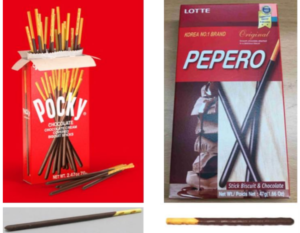The US Court of Appeals for the Federal Circuit found that facilitating browsing of documents on a website was sufficient to support public accessibility of prior art references, but that the Patent Trial and Appeal Board cannot sua sponte invalidate a claim as anticipated under § 102 unless that specific statutory ground had previously been noticed. M & K Holdings, Inc. v. Samsung Electronics Co., Ltd., Case No. 20-1160 (Fed. Cir. Feb. 1, 2021) (Bryson, J.)
In response to M & K Holdings’ suit for patent infringement, Samsung filed an inter partes review (IPR) petition seeking cancellation of all claims of the asserted patent as obvious. The patent is directed to an efficient method for compressing video files by “decoding a moving picture in inter prediction mode,” using a motion vector to quantify where “reference pictures are used to estimate motion of a current block” over the video duration. Samsung’s petition relied on references generated in connection with the Joint Collaborative Team on Video Coding (JCT-VC), which established industry standards for high-efficiency video coding (HEVC). All three prior art references were uploaded to JCT-VC’s website before the critical date.
After the Board held all claims of the patent unpatentable, M & K appealed, arguing that the Board erred by relying on references that do not qualify as prior art printed publications under 35 USC § 102, and by finding claim 3 anticipated when the petition for IPR asserted only obviousness as to that claim.
Public Accessibility and Printed Publications
M & K argued that a person of ordinary skill could not have located two of the three prior art references by exercising reasonable diligence, and therefore the Board’s holding that those references were publicly accessible was erroneous. Specifically, M & K argued that the structure and search capabilities of the JCT-VC website (requiring navigating to the JCT-VC landing page, clicking on the “All meetings” link and selecting a particular meeting in order to access documents, without any explanation that the “All meetings” label contains a document repository, and with no search functionality on the landing page or the “All meetings” page) meant that even if a user happened to navigate to a meeting page of the website, the user could not search documents by content, but could search only by date, title and number.
The Federal Circuit disagreed, explaining that public accessibility does not require a website’s landing page to have search functionality. Instead, “given the prominence of JCT-VC, the dispositive question is whether interested users of the JCT-VC website could have located [the references] through reasonable diligence.” The Court agreed that substantial evidence supported that interested users could have done so.
Regardless of whether the website described itself as a document repository, the Federal Circuit noted that a skilled artisan browsing the JCT-VC website would understand that it was structured to serve the JCT-VC’s purpose of developing HEVC standards through member meetings and communications. Therefore, a skilled artisan browsing the JCT-VC website would have realized that documents are hosted [...]
Continue Reading
read more

 Subscribe
Subscribe



